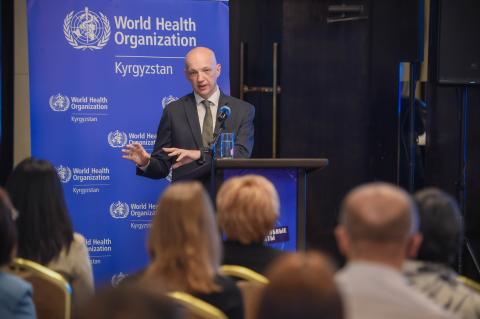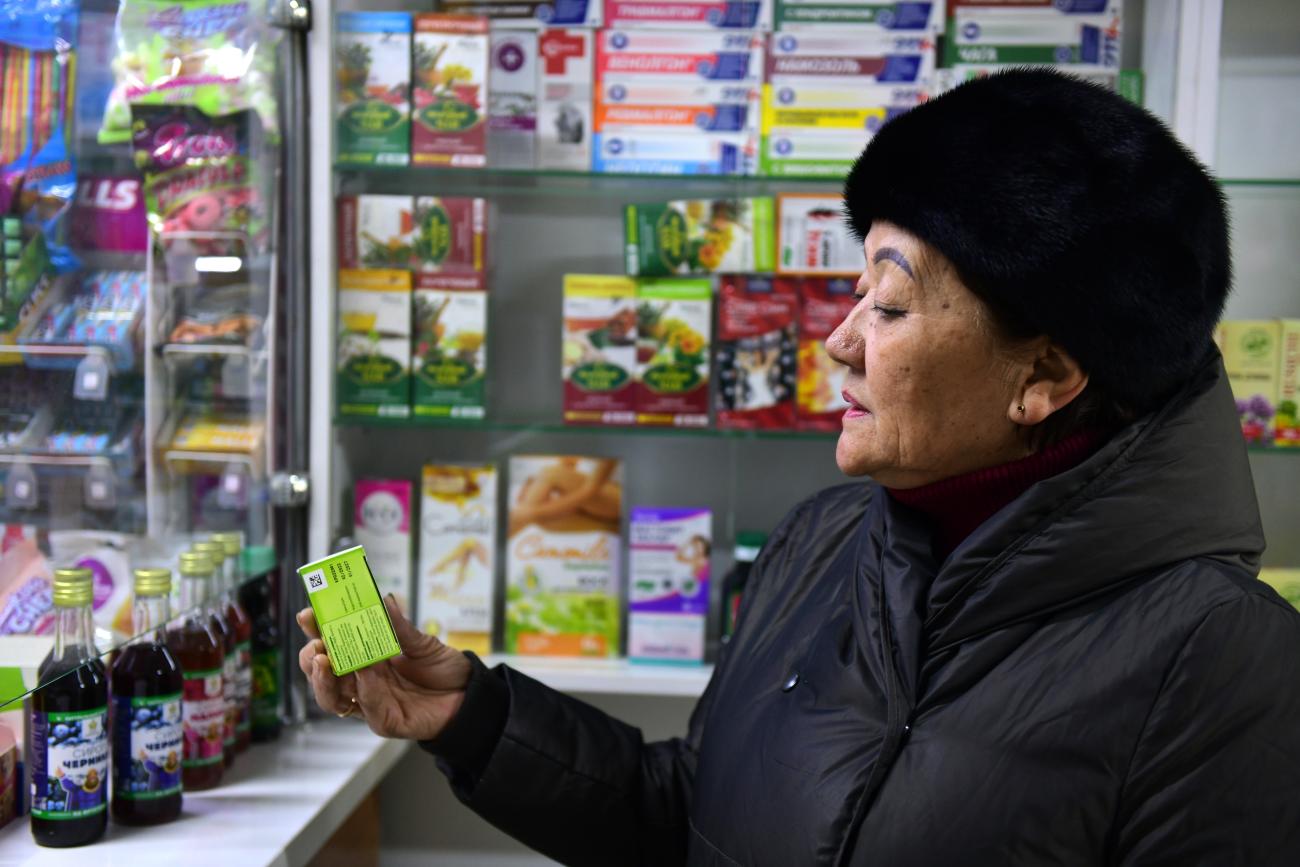In response to evidence on the financial hardship caused by out-of-pocket payments for medicines, Kyrgyzstan has introduced price control regulations for a range of essential medicines, including for noncommunicable diseases, which has lowered and stabilized prices.
Lower and more stable prices will help to reduce out-of-pocket payments, making medicines more affordable for people with chronic conditions, improving adherence to medicines and moving Kyrgyzstan towards UHC. UHC means everyone can access safe, effective and high-quality health care, including medicines, without experiencing financial hardship.
The benefits of the price control mechanism are greater protection from financial hardship for people with chronic conditions, and increased supply chain predictability, which ensures that lower-priced medicines are available when people need them. However, constant vigilance and advocacy are needed to ensure these gains are sustained.
With support from WHO, government and national stakeholders across Kyrgyzstan have demonstrated great commitment and political will to generate evidence, hold policy dialogues, engage multiple private and public sector stakeholders, and establish new laws to control the prices of medicines for the population.
“During COVID-19, people were faced with an explosion in medicines prices. It happened that a person went to a pharmacy and bought antibiotics for 400 soms a pack, for example, but the next day they cost 600-800 soms. The cost of some of the most popular medicines has increased 8-10 times. That is why we fully support the Government's attempts to start regulating prices."
“The main thing is not to make medicines disappear because of price regulation, not to make them scarce. In my opinion, the cost of medicines subject to price control should go down. The pharmaceutical companies are understanding. The surcharge may be small, but first and foremost it helps the needy.”
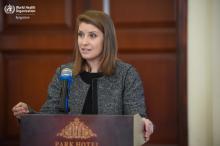
“Kyrgyzstan’s price control mechanism is a good example of how a strong commitment to evidence generation, innovation, policy dialogues and implementation supported by consistent and flexible funding from donors can reap rewards for people’s health and well-being. These gains have been hard won, and they are not automatic. Continuing to protect and expand the positive impacts of the price control mechanism, particularly for those experiencing financial hardship, will require continued vigilance, advocacy and demonstration of the benefits that equitable access to essential medicines brings not only to population health, but also to the wider society and economy.”
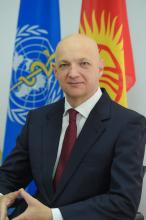
“WHO’s work in Kyrgyzstan is focused squarely on improving population health. Reducing the rates of undiagnosed and uncontrolled hypertension is a strategic priority for us for the next 7 years. Enhancing access to reasonably priced, high-quality essential medicines for those with hypertension, and for all who need them in Kyrgyzstan, will help to reduce morbidity and mortality and accelerate health and developmental gains throughout the country.”
THE LONG READ
Ymyt Berdibekova, a 66-year-old pensioner from Bishkek, is saving an estimated 10% of her spending on hypertension medicines thanks to a new initiative of the Ministry of Health of Kyrgyzstan.
Ymyt has been struggling with hypertension for over 36 years and must take medicine twice daily. She used to spend half of her monthly pension on her treatment, and she worked in a local shop to earn extra money as she could not meet her basic needs. In 2023, life became a bit easier for her and many others because, for the first time in Kyrgyzstan, prices of selected medicines were regulated, making them more affordable and accessible to the population.
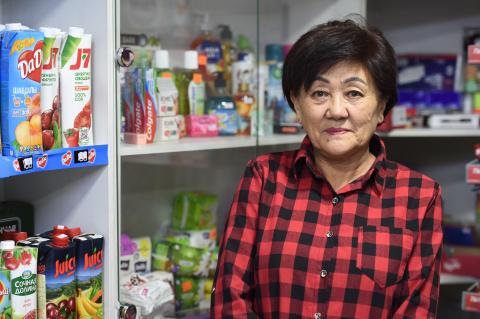
In May 2023, a government decree introduced price controls for all imported medicines included in the country’s list of essential medicines, including several medicines used to address the burden of noncommunicable diseases (NCDs), such as hypertension. The price control mechanism has reduced the cost of medicines for hypertension for around 420 000 people in Kyrgyzstan.
Although this change has had a positive impact for Kyrgyzstan’s population, progress is under threat since the recent removal of medicines from the value added tax (VAT) exemption list. The introduction of a VAT on medicines, including those on the country’s list of essential medicines, may offset the financial benefits of the price control mechanism for people such as Ymyt. While other benefits of the price control mechanism remain, such as ensuring the availability of lower-priced medicines when people need them, constant vigilance and advocacy are needed to ensure that the population is better protected from financial hardship.
Across the WHO European Region, financial hardship is largely driven by out-of-pocket payments for outpatient medicines, medical products and dental care – services that are commonly delivered or managed in primary care settings – indicating significant gaps in the coverage of primary care in many countries. For this reason, WHO suggests that countries consider exempting essential medicines from taxation and that this is coupled with measures to ensure that the policy results in lower prices of medicines to patients and purchasers.
With support from the UHC Partnership since 2018, WHO has worked closely with Kyrgyzstan’s Ministry of Health (MoH) to improve the affordability of medicines for people living with NCDs. This is critical for ensuring that people do not experience financial hardship due to accessing health care, a fundamental element of Universal Health Coverage.
The UHC Partnership operates in over 125 countries, representing over 3 billion people. It is supported and funded by Belgium, Canada, the European Union, France, Germany, Ireland, Luxembourg, Japan, the United Kingdom of Great Britain and Northern Ireland, and WHO.
The long journey to achieving price controls on medicines
Kyrgyzstan relies heavily on out-of-pocket payments to finance its health system. In 2021, out-of-pocket payments accounted for 41% of total spending on health. Evidence generated by the WHO Barcelona Office for Health Systems Financing has shown that the main drivers of out-of-pocket spending are medicines and medical products, which together account for more than 50% of household spending on health care. The most recent data shows that about 13% of households experienced catastrophic health spending. This was mainly driven by out-of-pocket payments for outpatient medicines and medical products, including essential medicines for conditions such as hypertension or diabetes.
95% of Kyrgyzstan’s essential medicines are imported, leaving its pharmaceutical market vulnerable to price fluctuations from shifts in currency exchange rates, as well as shortages. Because there was no regulation of prices, many medicines were very expensive, and the prices for same medicines were often different across the country. Furthermore, medicines were often more expensive in rural areas than in big cities. Therefore, in addition to making medicines more affordable, the price control regulation sought to ensure consistent and stable pricing. To ensure better availability of medicines, it is also important that countries invest in the supply and stock management system and are aware of their needs. Good planning is an asset to ensure that the right quantity of medicines will be available for patients.
In response to these findings, WHO through the UHC Partnership, supported the Ministry of Health to convene approximately 30 meetings and policy dialogues during 2018 to 2019 with relevant stakeholders. Representatives from the private and public sectors, international organizations, and patient advocacy groups took part, and WHO acted as a neutral facilitator of these policy dialogues, ensuring all voices were heard and all views considered.
The dialogues covered critical issues including the social responsibility and capacity of the private sector to ensure affordable access to essential medicines, maintaining the efficacy, safety, and quality of medicines, and how to manage potential risks during the introduction of price controls, such as supply chain disruptions.
Despite the risks, the MoH set up an interdisciplinary working group to address practical aspects of implementation. Activities included defining the list of medicines to be controlled, establishing the reference countries from which to benchmark prices, and identifying a mark-up scale for use in the price control mechanism. This resulted in the formulation of temporary regulation for state-reimbursed medicines at the outpatient level in October 2019. It was tested nationwide before its adoption as a permanent Government decree in 2023.
WHO supported this initiative by providing technical expertise, convening relevant stakeholders, and strengthening the technical capacity of the MoH working group through training. WHO facilitated the working group’s participation in Pharmaceutical Pricing and Reimbursement Information network meetings to learn from other countries' experiences of introducing price controls. Throughout the process, WHO ensured support from renowned international and national experts aiming to align national policy and legislation with WHO recommended pricing policies.
“One size doesn't fit all. The Ministry of Health has tried to find its own way considering our economic, social, regulatory, and legal peculiarities. The intersectoral working group, which also includes representatives from the business sector, developed its own approach,” said Dr Isabek Ismailov, Head of the Price Regulation Control, Department of Medicines and Medical Devices, Ministry of Health.
Action on price controls during COVID-19
In 2020, global supply chain disruptions during the COVID-19 pandemic reinforced the need to regulate the price of essential medicines.
“During COVID-19, people were faced with an explosion in medicines prices. It happened that a person went to a pharmacy and bought antibiotics for 400 soms a pack, for example, but the next day they cost 600-800 soms. The cost of some of the most popular medicines has increased 8-10 times. That is why we fully support the Government's attempts to start regulating prices," said Ms Gulmira Abdrazakova, Head of the Patients' Association and a member of the Coalition for Budget Advocacy.
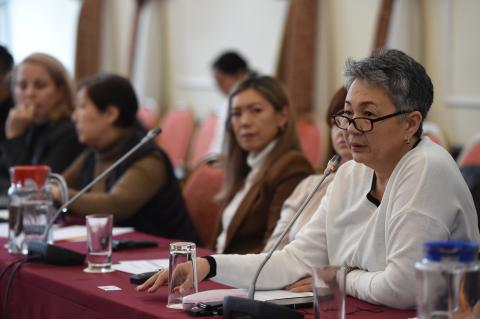
During the pandemic, WHO through the UHC Partnership continued to provide the MoH with technical assistance to test and evaluate the impact of the temporary price control regulations. Activities included IT solutions to support the assessment of reference prices used in the price control mechanism and additional policy dialogues to discuss results and adjustments to the mechanism’s design.
During the final phases of the legislative process, WHO continued to serve as a neutral platform for all stakeholders to ask questions and hold constructive dialogue.
Final regulation on price control introduced
On 31 May 2023, Kyrgyzstan approved a permanent price control regulation on all imported medicines and implemented this nationwide. The regulation was also expanded from covering state-reimbursed medicines at the outpatient level to covering all medicines on the country’s list of essential medicines.
The regulation incorporated lessons from the testing phase and is a strong symbol of the consistent effort and political commitment from a range of stakeholders, including the Government of Kyrgyzstan, WHO through the UHC Partnership, medicines manufacturers and providers, and international donors.
“The main thing is not to make medicines disappear because of price regulation, not to make them scarce. In my opinion, the cost of medicines subject to price control should go down. The pharmaceutical companies are understanding. The surcharge may be small, but first and foremost it helps the needy,” said Ernis Asanov, Chairman of the Pharmaceutical Union of Kyrgyzstan.
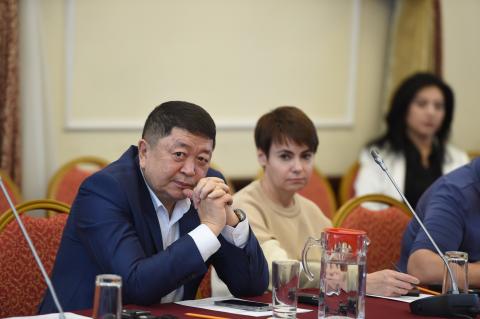
Impact on the population
Introduction of the price regulation has helped to prevent sharp and unreasonable price increases in the pharmaceutical market. In the case of hypertension, for example, preliminary analysis from the WHO Country Office in Kyrgyzstan indicates that the price control mechanism has reduced the cost of essential medicines for hypertension for around 420 000 people, most of whom are over 40 years of age.
Since 2021, the retail prices of several hypertension medicines have come down, demonstrating the positive impact for patients while maintaining market stability. This allows people to forecast and plan their budget for medication expenses more effectively.
On average, the price of essential medicines for hypertension has been reduced by 10%, saving patients and consumers approximately US$ 3.1 million each year. If diagnosis and treatment rates of hypertension were to increase, this savings could be as high as US$ 7.4 million each year.
Given that hypertension medicines account for only 10% of the generic pharmaceuticals on the country’s list of essential medicines, the total savings delivered to patients and consumers from the price control regulation is likely to be on the scale of tens of millions. However, in the absence of an exception for medicines on the country’s list of essential medicines, the blanket introduction of a new 12% VAT on medicines is expected to largely cancel out these gains.
“Kyrgyzstan’s price control mechanism is a good example of how a strong commitment to evidence generation, innovation, policy dialogues and implementation supported by consistent and flexible funding from donors can reap rewards for people’s health and well-being. These gains have been hard won, and they are not automatic. Continuing to protect and expand the positive impacts of the price control mechanism, particularly for those experiencing financial hardship, will require continued vigilance, advocacy and demonstration of the benefits that equitable access to essential medicines brings not only to population health, but also to the wider society and economy,” said Amanda Shriwise, Health Policy Advisor, WHO Country Office in Kyrgyzstan.
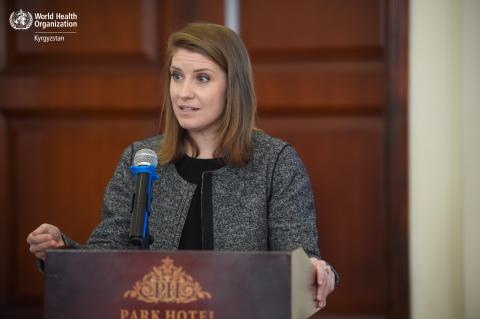
Looking to the future – WHO cooperation in Kyrgyzstan
In November 2023, WHO and the Ministry of Health signed a 7-year Country Cooperation Strategy for 2024–2030 seeking to achieve clear targets in 7 strategic priority areas, within all of Kyrgyzstan’s 7 oblasts. Hypertension is the first strategic priority area in the strategy, and the MoH and WHO will build on the advances supported by the UHC Partnership to support more people like Ymyt to ensure that their high blood pressure is effectively controlled without financial hardship.
As well as improving the health and financial protection of individuals, these changes will also bring co-benefits to the wider Kyrgyz economy. Evidence suggests that the economic payoff of improved treatment of hypertension outweighs the cost by about 18 to 1.
“WHO’s work in Kyrgyzstan is focused squarely on improving population health. Reducing the rates of undiagnosed and uncontrolled hypertension is a strategic priority for us for the next 7 years. Enhancing access to reasonably priced, high-quality essential medicines for those with hypertension, and for all who need them in Kyrgyzstan, will help to reduce morbidity and mortality and accelerate health and developmental gains throughout the country,” said Liviu Vedrasco, WHO Representative to Kyrgyzstan.
